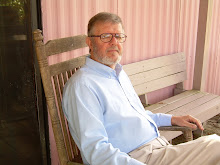
The Eastpointer
Sitting on the dock of the bay
By Richard E. Noble
Our first year oystering on Cat Point was what some might call a “religious” experience. The bay was a miracle, we were told.
In those first few years that we were here - from 1982 to 1985 - the oyster crop was abundant. There were more oyster boats on Cat Point in those years than there has ever been since, I’m sure. In fact paranoia had set in.
New people came to Apalachicola Bay from all over. There were people here from Alabama, Georgia, Chesapeake Bay, Louisiana, Mississippi, and all parts of Florida. Carol and I were from Massachusetts. But Carol and I were a fluke. Most of the others were here because they had heard about the bumper oyster crop. They came here specifically to catch oysters.
Finally a year arrived where the local oystermen could make a little money and people were coming from everywhere as if Apalachicola Bay was Sutter’s Creek and it was 1849. There were meetings at the courthouse. Most oystermen wanted to protect the local oyster crop from this foreign invasion. What could they do?
As Carol and I would sit out on the dock at the Island View Campground and look at all the boats on Cat Point, we would speculate on how long our migrant experience here in Franklin County would last.
In those days we were migrant workers. We went from one area to another harvesting apples, oranges, peaches or whatever. We were completely mobile. If there were no oysters here next September we would be off to Michigan to pick apples. And from what we could see, we were convinced that this was just another short run working experience. With all those boats smothering Cat Point, it would be a miracle if there were even shells left come next year. We weren’t worried but the locals were. We had a rented boat and an old motor that cost us $300. We could throw the old motor away and we’d still be ahead on this work stop.
We asked the owner of the campground about this situation. He was a dealer, and a lifetime oysterman. He laughed. “This is nothing,” he said. “I’ve seen times when this bay was so thick with oyster boats that you could walk from one boat to the next from here to the Island and never get your feet wet.”
We discounted his testimony as that of a businessman who was making money off the influx of “foreigners.” Bosses love to see lots of available workers; it keeps wages low and profits up.
We decided to go to the meeting at the courthouse and listen to the locals and the guest experts. There were advisers here from numerous government agencies. They we here to explain the options to the outcry of concerned oystermen.
The oystermen wanted restrictions. Some wanted permits to be sold only to residents of Franklin County. Others suggested that the number of licenses sold should be limited and on a first come first serve basis. In the future oyster licenses would be handed down to family members or sold by the license holder. There were numerous suggestions, but the experts from the DNR and all the other agencies shot down the possibilities one after another.
The experts suggested charging more for an oystermen’s license. A license sold for $5.00 and you could buy one at the courthouse any time of the year. The experts suggested the possibility of a $500 license. The oystermen gagged. Were these guys kidding? That price would not only restrict the outsiders but the locals as well.
It was the workers responsibility to find work. If there were no oysters in Apalachicola next year, the oystermen would have to become something else. Carol and I had already set ourselves up to find other options. If there were no more oysters, we would move on down the road to the next job. We knew how to survive. That was our whole idea. We would not be trapped by an expensive house and a job at the local mill - or oyster bar. We would carry our home on our back and move it to wherever the work was.
But when that next year arrived, there were as many oysters on Cat Point as there were the year before. As the years went by the Cat Point crop varied but there were always oysters. So we hung around. You might say we fell into the “security trap.”
We’re still here. We’ve moved on from oystering. There are new problems and new worries for the oystermen but the oysters are still here. Most of the Dealers are gone. The Marine Patrol is gone and so are their Miami Cigarette Boats and helicopters. The DNR is gone. The check stations are gone. But there are still oysters and there are still oystermen.
The Eastpointer is R.E. Noble’s latest publication. It is a selection of columns from the Franklin Chronicle. It is for sale on Amazon along with his other works. Richard Noble is a freelance writer who has lived in Franklin County for thirty years.






































No comments:
Post a Comment